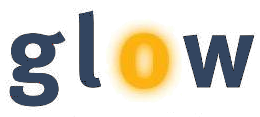> Printer-friendly version: Download the complete GLOW programme
Programme
| Saturday, April 5th, 2014 – Room 3112 | ||
|---|---|---|
| 9.00-10.00 | Invited Speaker: Paula Fikkert (Radboud University Nijmegen) From raw speech to a phonological system: how do children do this? |
|
| 10.00-10.20 | Coffee Break | |
| 10.20-10.55 | Hyunsoon Kim (Hongik University) Acoustic correlates of articulation-based distinctive features in perception: Evidence from Korean |
|
| 10.55-11.30 | Geoff Schwartz (Adam Mickiewicz University) All gradience is not created equal |
|
| 11.30-11.45 | Coffee Break | |
| 11.45-12.20 | Antonio Baroni (University of Padua) About U and I |
|
| 12.20-12.55 | Daniel Currie Hall (Saint Mary’s University) Substance use in moderation: Contrast and content in phonological features |
|
| 12.55-13.55 | Lunch | |
| 14.00-15.00 | Invited Speaker: Bert Vaux (University of Cambridge) The atoms of phonological representation: features vs. gestures |
|
| 15.00-15.20 | Coffee Break | |
| 15.20-15.55 | Pavel Iosad (University of Edinburgh) The [ATR]/laryngeal connection and emergent features |
|
| 15.55-16.30 | Paul Boersma (University of Amsterdam) How phonological elements can be both auditory-based and substance-free |
|
| 16.30-16.50 | Coffee Break | |
| 16.50-17.50 | Invited Speaker: John Harris (University College London) Mapping segmental phonology to the speech signal: what’s the acoustic energy baseline? |
|
| Alternate 1 | Typhanie Prince (University of Nantes) The Case of Segmental Complexity in Aphasia and in Acquisition of French: Evidence for Element Theory |
|
| Alternate 2 | Kateřina Chládková (University of Amsterdam), Titia Benders (Radboud University Nijmegen) and Paul Boersma (University of Amsterdam) Is the phonetic signal mapped directly to phonological feature categories? Investigating the perceptual basis of vowel height |
|
Theme description
The primitives of phonological theory – whether we call them features, elements, gestures, or some other name – stand in some relation to phonetic reality. Although there is consensus about this, there does not seem to be much agreement about specifics, such as how many primitives there are, whether they are privative or binary, and whether all segments need to be specified for all of them. In this workshop we aim to bring together phonologists working in different traditions to discuss how some of the most pressing issues are to be resolved.
The first issue is the nature of the relationship between phonological primitives and phonetics. As far as we can see, there are roughly three options: one can either assume that the primitives represent elements of articulation (as in most feature theories or in Articulatory Phonology); or elements of acoustics (as in Element Theory). Or is the mainstream view incorrect, in that phonological primitives bear no direct relationship to phonetics at all (as in Substance-Free Phonology)?
The second issue is to what extent the primitives of phonological representation can also be manipulated by modules outside of ‘phonology proper’, such as ‘phonetic implementation’ or ‘sociolinguistics’. More specifically, does phonetic implementation only add gradient detail to the phonological output representation, or can it also add additional ‘phonological’ objects?
The third question, related to the previous one, is whether we have to distinguish between different ‘levels’ of phonological representation, each spelling out more or less detail – in other words, whether there is ‘underspecification’ at the lower levels of phonology (and perhaps also in the phonetics), how this is determined, and what evidence we have for such underspecification beyond theoretical elegance.
The final question is to what extent the ‘primitives’ of phonological theory are really atomic, or whether they have some internal structure. There are several types of substructure that come to mind; e.g. binary features crucially distinguish an attribute and a value; but one could also wonder whether the uniform behaviour of e.g. ‘Place’ features (or ‘Colour’ elements) in some phonological processes is not really an indication of their sharing some internal structure.
The questions outlined above are fundamental and in many cases quite old, and we would particularly invite abstracts which aim at a principled discussion of these debates in light of recent experimental, computational or theoretical work. Presentations will be 25 minutes long plus 10 minutes of discussion.
Organizers
- Bert Botma (Leiden University)
- Andrew Nevins (University College London)
- Marc van Oostendorp (Leiden University & Meertens Institute).
Invited speakers
- Paula Fikkert (Radboud University Nijmegen)
- John Harris (University College London)
- Bert Vaux (University of Cambridge)
Important dates
- First call & opening of the submissions: June 15, 2013
- Second call: September 15, 2013
- Third call: November 15, 2013
- Abstract submission deadline: December 1, 2013
- Notification of acceptance: January 31, 2014
- Workshop: April 5, 2014.
